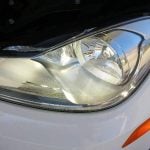 In this article, we go over the most common Mercedes turn signal problems and how to diagnose such problems yourself. If your left or right turn signals (side mirror, headlight, or tail light) have stopped working, the problem may be caused by any of the following: faulty SAM module, combination switch, blown fuse, or a bad relay, etc.
In this article, we go over the most common Mercedes turn signal problems and how to diagnose such problems yourself. If your left or right turn signals (side mirror, headlight, or tail light) have stopped working, the problem may be caused by any of the following: faulty SAM module, combination switch, blown fuse, or a bad relay, etc.
Problem
- The left or right Mercedes turn signal is NOT working.
- All Mercedes turn signals don’t work.
- The turn signal doesn’t work after installing a new bulb
In newer Mercedes models, you will get a warning on the instrument cluster stating, “Turn Signal Left / Right / Front / Rear / Side Malfunction.” Depending on the Mercedes model and problem, a warning may or may not show on the dashboard.
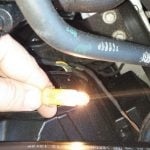 Always start by double-checking the turn signal light bulb. Make sure it is installed properly in the turn signal socket. Replace them if they are burned or have corroded contacts. Replacing turn signal bulbs with new ones with the correct wattage is important. Check the recommended turn signal bulb type and wattage in the owner’s manual.
Always start by double-checking the turn signal light bulb. Make sure it is installed properly in the turn signal socket. Replace them if they are burned or have corroded contacts. Replacing turn signal bulbs with new ones with the correct wattage is important. Check the recommended turn signal bulb type and wattage in the owner’s manual.Common Mercedes Turn Signal Problems
- Front or Rear Mercedes Turn signals not working
- Left or Right Turn signals not working
- Turn Signals and Emergency Hazard Flasher Inoperable
Mercedes turn signal won’t work. First things to check!

2. Test or replace the turn signal relay. Swap the turn signal replay with another relay in the identical fuse box. Does the problem follow the relay? 
3. Press the hazard warning switch on and off several times. The switch can get stuck and prohibit the turn signals from operating properly.
1 – Left or Right Mercedes Turn signal not working
Problem:
Mercedes’s turn signal is not working. It could be one of the turn signals located in the front, rear, or side mirror housing.
Cause:
Any of the following may cause Mercedes turn signal not working problems:
- a bad headlight/taillight electrical plug/connector/harness
- burned turn signal contact may heat up and melt the plastic that covers the contact points.
- A bad SAM module
- a burned light bulb
Solution:
Replace the light bulb with a new bulb that has the recommended wattage and bulb type.
 The electrical plug that plugs into the headlight or taillight assembly may be loose or not making good contact. Remove the electrical plug from the turn signal unit that is not working and inspect it. Clean it electrical contact cleaner if necessary.
The electrical plug that plugs into the headlight or taillight assembly may be loose or not making good contact. Remove the electrical plug from the turn signal unit that is not working and inspect it. Clean it electrical contact cleaner if necessary.
We have seen cases where the turn signal stopped working due to inadequate electrical contact between the turn signal bulb socket and the headlamp housing.  The socket contact points heat up to the point where they start to melt. If this is your problem, try using sandpaper to clean the socket and try reinstalling it.
The socket contact points heat up to the point where they start to melt. If this is your problem, try using sandpaper to clean the socket and try reinstalling it.  If the turn signal fails within a few weeks, replace the socket or the turn signal assembly if necessary. If you keep having the problem of the turn signal socket melting, try adding a ground from the tail light to the frame.
If the turn signal fails within a few weeks, replace the socket or the turn signal assembly if necessary. If you keep having the problem of the turn signal socket melting, try adding a ground from the tail light to the frame.
Check for power at the turn signal assembly.
- You need to use a digital multimeter to test for power at the headlight/taillight.
- Set the digital multimeter to DC voltage current.
- Turn the turn signal switch or hazard lights on.
- Measure the voltage at the turn signal socket.
 You should get between 11 and 14 volts if you don’t get any power check continuity between the turn signal and the SAM module.
You should get between 11 and 14 volts if you don’t get any power check continuity between the turn signal and the SAM module.
If you don’t get any power, check the continuity between the turn signal and the SAM module. Here is a good article on how to perform this test on a Mercedes-Benz.


Diagnose the SAM module and replace it if necessary. Read codes with the YOUCANIC full system scanner if you are a Mercedes owner trying to troubleshoot the problem yourself. Mercedes-Benz cars have two or more SAM units.
- Left front SAM (N10/6) powers left front lights
- Right front SAM (N10/7) powers right front lights
It is not common for both of these SAM units to fail simultaneously. It’s typically one or the other.
Mercedes (left or right) turn signal constantly ON
A defective SAM module can cause one turn signal to stay on all the time while the rest operate properly.
2- Left or Right Turn signals not working
Problem:
- Turn signals on one side (left or right) of the car are not working. When you press the switch to turn left (or right), none of the turn signals on one side work.
- Turns light doesn’t stay on. The turn signal switch doesn’t engage to keep the left or right turn signal on. You can manually hold the turn signal switch pressed to keep the turn signal flashing.
Cause:
In most cases, these turn signal problems are due to a faulty turn signal switch. The turn signal switch is part of the combination switch found in the steering column and is mounted right behind the steering wheel. You may also notice that the wiper switch is not working either. That’s because the turn signal switch and wiper switch are combined. 
You will need to remove the steering wheel to replace the combination switch. It’s a very straightforward procedure. Remember to disconnect the negative battery terminal.
Look at the part inside the turn signal/combination switch that often fails. You can’t replace the internal part. Therefore, the whole turn signal switch needs to be replaced.
Click here to check prices on new & used Mercedes turn signal switches (eBay link).
Solution:
Replace the turn signal switch. You can replace it with a used turn signal switch; no programming is required. Ensure the new or used switch you install has the same part number as the existing one. To find the part number for your existing switch, call your Mercedes-Benz dealer parts department, provide them the VIN of your Mercedes-Benz, and they will identify the compatible part numbers.
Once you have the part number for your turn signal switch, check the following listings to find a replacement turn signal switch for your Mercedes-Benz.
3 – Turn Signals and Emergency Hazard Flasher Inoperable
Problem:
- None of the turn signals work. Left and right turn signals don’t work.
Cause:
- Burned turn signal fuse.
- Defective hazard lights switch.
Solution:
- Replace the fuse designated to protect the left and right turn signal fuses.
- Replace the hazard light switch. For a temporary fix, try pressing the hazard light switch several times. This may unstick the hazard slights button and return your turn signals to normal operation.
4 – Blown turn signal fuse
Problem:
- A blown turn signal fuse or turn signal fuse keeps on blowing.
Cause:
Short in the wires that provide 12 volts to the turn signal.
Solution:
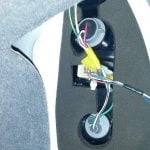 You will need to locate the short and repair it. Check the wiring inside the headlight or tail light as the insulation of the wires may melt over time, causing a short. We have seen this happen on several E and CLK class models. A good technician should be able to help you with this procedure if you get stuck.
You will need to locate the short and repair it. Check the wiring inside the headlight or tail light as the insulation of the wires may melt over time, causing a short. We have seen this happen on several E and CLK class models. A good technician should be able to help you with this procedure if you get stuck.
Some of the locations where shorts can develop are the following:
- wiring harness
- Inside the headlight assembly
- Inside tail light assembly
- mirror housing
- where door harness goes from door to body
Frequently Asked Questions
My Mercedes turn signal stops working after driving for a while.
Tracking down intermittent turn signal problems can be challenging. Most shops and sometimes even dealerships may send you home with a repair order that says “can’t track customer complaint.” Often, when you take the car in, it isn’t acting up. All mechanics will have a hard tracking down intermittent problems. They can’t fix a problem that they can’t duplicate. Our advice would be to find a shop that has Star Diagnostic scanner or take the car to the Mercedes-Benz dealer and have them complete a full system scan. Hopefully, one of the control units recorded the problem and stored a fault code. If there aren’t any stored fault codes, finding out what is causing your turn signal problem will be extremely difficult.
Can I disconnect or unplug the SAM unit?
No, you can’t. It controls multiple systems. The vehicle may not start.
The LED turn signal light stopped working; what should I do?
LED lights rarely fail. The first test you should perform is disconnecting the LED turn signal light and applying power to the LED bulb. Does the LED light turn on?
- If the LED doesn’t turn on, replace it.
- If the LED turn signal light does turn on, the LED light is not the problem. Follow this troubleshooting guide to find out what is causing your turn signal problem.
What are the locations of the turn signal bulbs and sockets?
- E2e2: Right low beam
- E1e1: left high beam
- E1e3: left standing/parking
- E1e4: left front fog
- E1e5: left turning signal
What Scanner can I use to diagnose the SAM module on my Mercedes-Benz?
The YOUCANIC full system diagnostic scanner is a valuable tool for Mercedes-Benz owners who want to troubleshoot problems with their vehicles. This advanced scanner can read and interpret fault codes from the car’s computer system, providing detailed information about any problems with the engine, transmission, brakes, or other critical systems. The scanner can also perform diagnostic tests on various systems, including the ABS, airbag, and steering systems, to help pinpoint the root cause of any issues. With this information, you can make more informed decisions about repairs and maintenance, saving time and money on costly repairs.
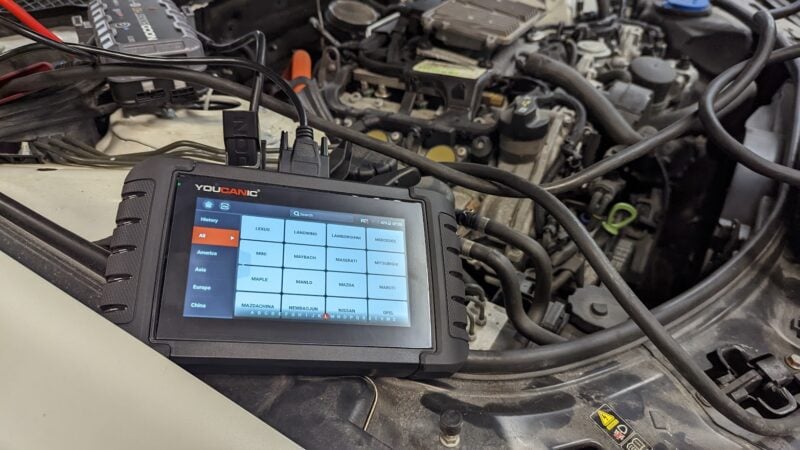
In addition to its diagnostic capabilities, the YOUCANIC scanner can help you reset maintenance reminders and service indicators, allowing you to stay on top of your vehicle’s regular maintenance schedule. This is important because regular maintenance is essential for keeping your Mercedes-Benz running smoothly and preventing major problems down the line. Using the YOUCANIC scanner, you can ensure that your vehicle is always in top condition, reducing the risk of breakdowns and other issues that could cause inconvenience or costly repairs. Whether you’re a DIY mechanic or a professional technician, the YOUCANIC full system diagnostic scanner is essential for troubleshooting Mercedes-Benz problems and keeping your vehicle in top condition.
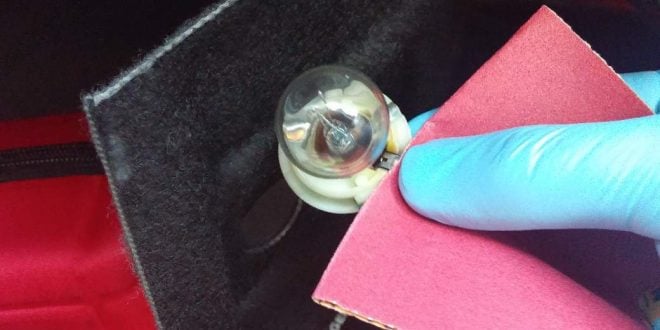


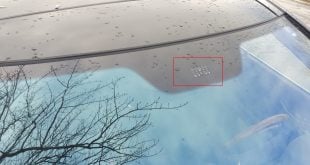
right signal light will not release after the turn on my 1988 560sll